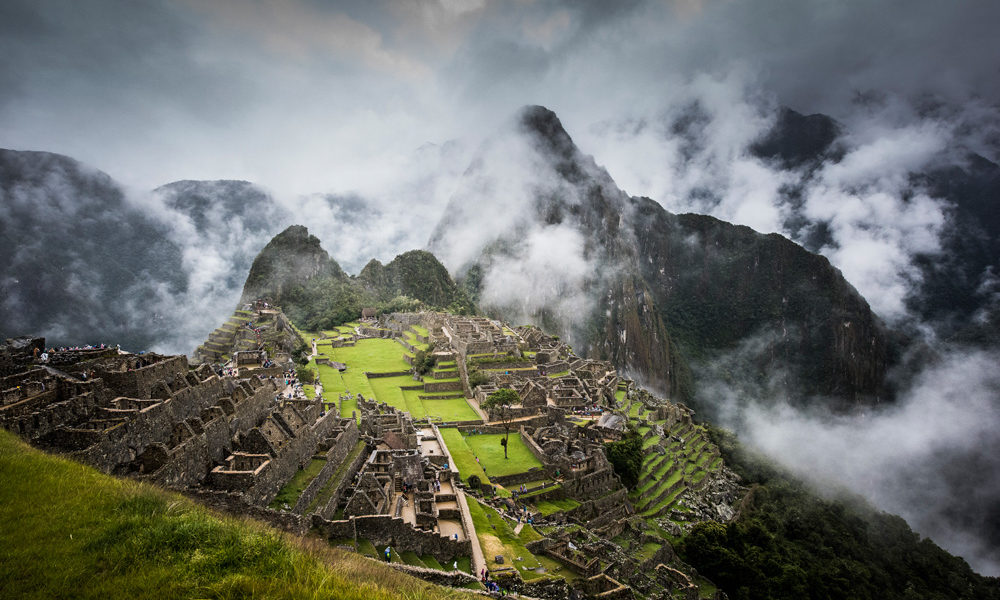
Photo by: Nicolas Gildemeister
Machu Picchu is a paradox. A place that lures you into the mysterious grip of a long lost civilization while being overrun by humanity at the same time. In one moment, you can’t help but be moved by the sheer wonder of the place, weeping like the dreadlocked mystic standing next to you, and the next, snapped back into reality as you are pushed by tourists wearing plastic capes that will end up overflowing in the trash bins outside, guards blowing whistles to keep the masses moving in the right direction, and selfie sticks whizzing by your head.
Fast forward a few days later as I lie down on the grass of the Plaza Principal with only a handful of my fellow travelers on this Columbia Sportswear trip, watching the fireflies zip around our heads at the 600-year-old ruins of Choquequirao. We spent hours in solitude, staring up at the billions of stars and negative spaces in the dense river of the Milky Way, searching for the celestial animals of the Inca. The llama. The snake. The fox with its red burning eye.
There is an “earn your ruins” ethos to Choquequirao, where solitude is the reward for a four day out-and-back trek. Many people can’t be bothered to hike the roughly 35 miles with over 16,000 feet of elevation gain required to cross the Apurimac canyon twice. There are no trains or buses to effortlessly transport you to the entrance, and no massage parlors, pizza joints, or 4-for-1 happy hours to greet your weary feet at the end of the day. Just you, the ruins, and the apus or the spirits of the mountains.
Two days earlier we had left Cusco at 3:00 am, anxious to get out of town before a strike blocked the streets, making our pilgrimage to Choquequirao impossible. Five to six hours of winding roads, speed bumps, and random police drug checks later, we arrived at Cachora, a small town surrounded by patchwork fields of quinoa and potatoes, staples of the Peruvian diet. While the trek to Choquequirao officially starts here, our bus driver chose to bravely drive us up the 10 kilometer mud road to Mirador de Capuliyoc — a lookout point where the dirt road ends and the descent into the canyon begins. Never mind that our bus barely fit over a makeshift log bridge, where one wrong move meant tumbling down the side of a ravine.
The mud-filled Capuyiloc lookout isn’t much more than a bucket-flush toilet and a couple of huts where you can have a last minute coca tea or buy a Inca Kola for the road, enveloped in a chaos of hikers, mules, and muleteers trying to load up their charges. More so than the view, the entertainment seemed to be helping the buses turn around in a seemingly impossible patch of space.
Crossing the Canyon
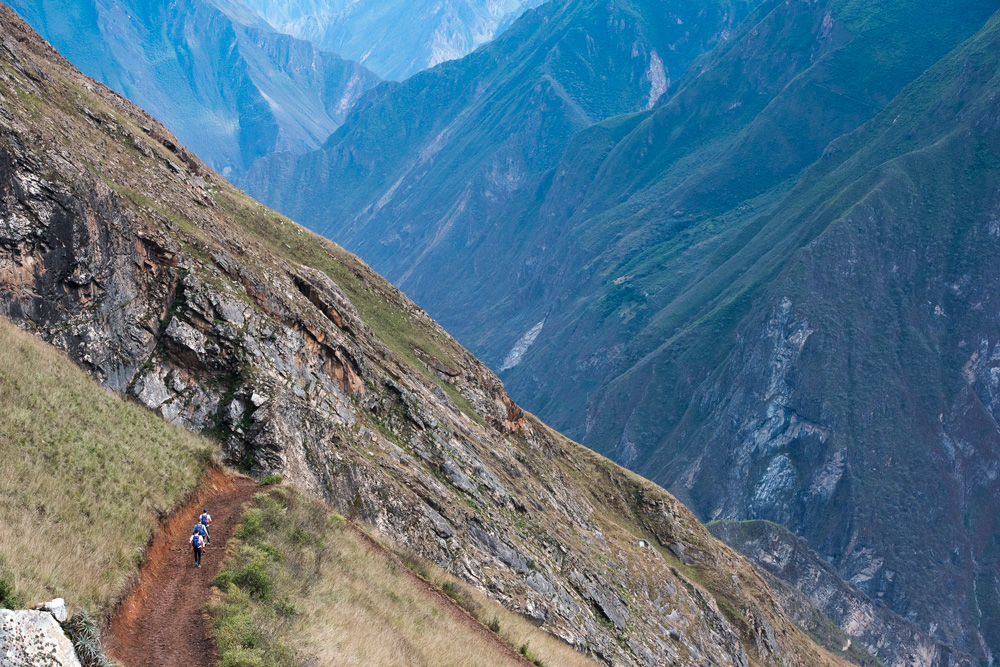
Photo by: Nicolas Gildemeister
From Capuyiloc, the Choquequirao Trail descends unrelentingly down 5000 feet to the Apurimac River. The trail reminded me of my recent trip down into the Grand Canyon, but instead of descending a similar elevation via gentle switchbacks, here you take a much more direct, knee-busting route. Peru’s wealth of microclimate diversity was on display as the vegetation quickly changed from cactus to dwarf tree forest before hitting the arid banks along the river where small biting gnats waited in ambush. The snow-dusted mountains of the Vilcabamba range watched over us in the distance.
It was lunchtime by the time we hit the bridge that now crosses the Apurimac (before you had to pull yourself across in a cage suspended on a cable). There was some debate about whether or not to soldier on to camp before eating lunch but the muleteers had already unloaded and the chef was busy preparing a delicious meal of noodle soup followed by trout and rice — way better than the PB&J that would normally constitute my hiking lunch.
To say the hike back up the other side of the canyon to camp was brutal would be a bit of an understatement. It was gut busting, leg burning, morale sapping steep. But I found that as long as I put one foot in front of the other and kept up a steady (albeit slow) pace without stopping, the elevation gain, almost 5000 feet in total, ticked away pretty rapidly. Some of us turned to the Inca-old tradition of sticking a handful of bitter-tasting coca leaves into your mouth, better yet combined with llipta (ash from the quinoa plant), for a little added energy boost during the long ascent.
The sun began to set behind the mountains as we rolled into our camp at Marampata, soaked in sweat. After settling in and a hearty dinner of chicken and rice, a few of us sat outside our tents well into the night, sipping on pisco and watching the fog roll in up the valley, obscuring our front row seats of the Milky Way from time to time. Life was good.
Visiting The Cradle of Gold
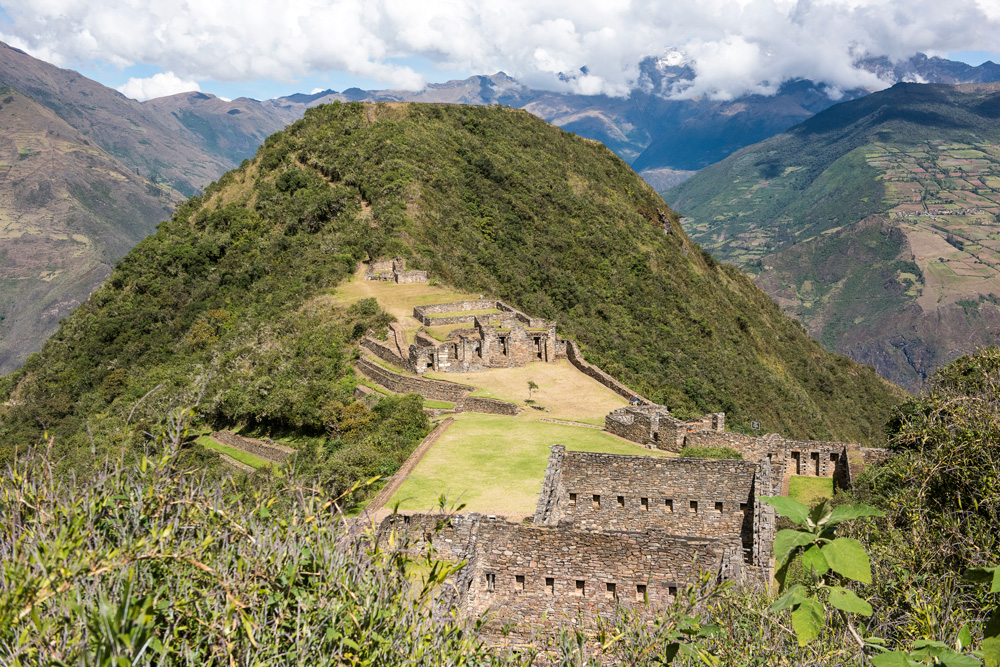
Photo by: Nicolas Gildemeister
Greeted by hot cups of coca tea, we emerged from our tents in the morning to catch the alpenglow hitting the surrounding mountain tops. During a hearty breakfast of kiwicha pop, a Peruvian superfood, oatmeal, and apple-stuffed pancakes, we commiserated over the resident rooster’s apparent case of jetlag.
From our camp at Marampata, we were just a few miles from Choquequirao; indeed we could see the ruins silhouetted on the distant ridgetop. A short, albeit roller coaster of a hike stood between us and our prize destination. Upon arrival, a simple gate with a flip flop for a hinge marked the official entrance to the ruins — no timed entries or ticket checks here. All around us, we could see stone walls and terraces grown over with jungle.
Continually “re-discovered” by explorers and treasure hunters over the years, including American Hiram Bingham of Machu Picchu fame, preservation of the site only started 30 years ago. Choquequirao (in Quecha it means “Cradle of Gold”) resembles Machu Picchu in many ways, so much so that it is often called its “sacred sister.” Built around the same time in the 15th century, Choquequirao was one of the last strongholds of Manco Inca Yupanqui, the Inca Emperor who fled from the Spanish after his failed takeover of Cusco in 1536.
While the visible site may appear smaller, it is believed that hidden beneath the misty cloud forest, 70%- 80% of the total ruins are just waiting to be found — this could place Choquequirao at up to three times the size of Machu Picchu. While only 50 miles east of Peru’s most famous landmark, these ruins see just a handful of visitors a day compared to her sacred sister’s 4000 plus. A lone ranger guards the site, occasionally hacking away at errant vegetation with his machete.
Built on ridges high above sacred rivers and surrounded by mountains, both sites feature distinctive upper and lower levels, built around a central ceremonial plaza, with an elevated usnu or platform at one end. Each site is surrounded by stone wall terraces that served both as a place to plant crops and to support the buildings above from eroding down the steep terrain.
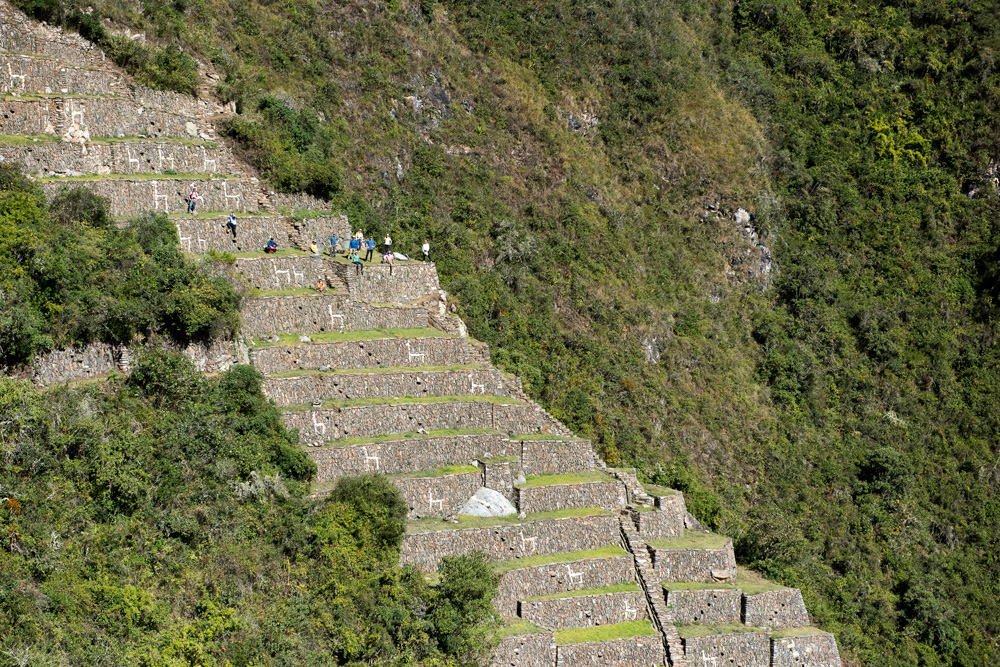
Photo by: Nicolas Gildemeister
Arguably one of the highlights of Choquequirao is the vast network of terraces, some requiring a hike down thousands of feet to reach their precarious perch alongside a raging waterfall. Llamayoc or the llama terraces on the other side of the mountain from the main complex, dazzle with their series of white stone llamas built into the dangerously steep, dark schist walls.
We spent the entire day and well into the night exploring Choquequirao, with only a brief trip to back down to the campground to refuel over a late lunch. For me, the magic of the place really shone through after dark as the vastness of our universe unfurled before our eyes. It’s hard to put into words how I felt staring staring up into the Milky Way that night, so I’ll simply echo the sentiment of one of my literary idols, the late, great Anthony Bourdain.
“It’s an irritating reality that many places and events defy description. Angkor Wat and Machu Picchu, for instance, seem to demand silence, like a love affair you can never talk about. For a while after, you fumble for words, trying vainly to assemble a private narrative, an explanation, a comfortable way to frame where you’ve been and what’s happened. In the end, you’re just happy you were there- with your eyes open- and lived to see it.” - Anthony Bourdain
What Does the Future Hold?

Photo by: Nicolas Gildemeister
Some visitors to Choquequirao continue onward to Machu Picchu on an epic nine-day trek following in the longer Inca Trail. Our plan, however, was to head back back down to the Apurimac River and out a different way, via San Ignacio and the Choquequirao Lodge, where’s there’s talk of a cable-car being built to allow tourists quick access to the ruins. Thankfully, whether due to infighting between the Cusco and Apurimac provincial governments or the simple lack of overall support, final plans for the cable car have yet to materialize. So for the next couple years at least, Choquequirao will remain a place where you can wander around 600-year-old temples and terraces and barely meet a soul.
Recommended Reading
If You Go
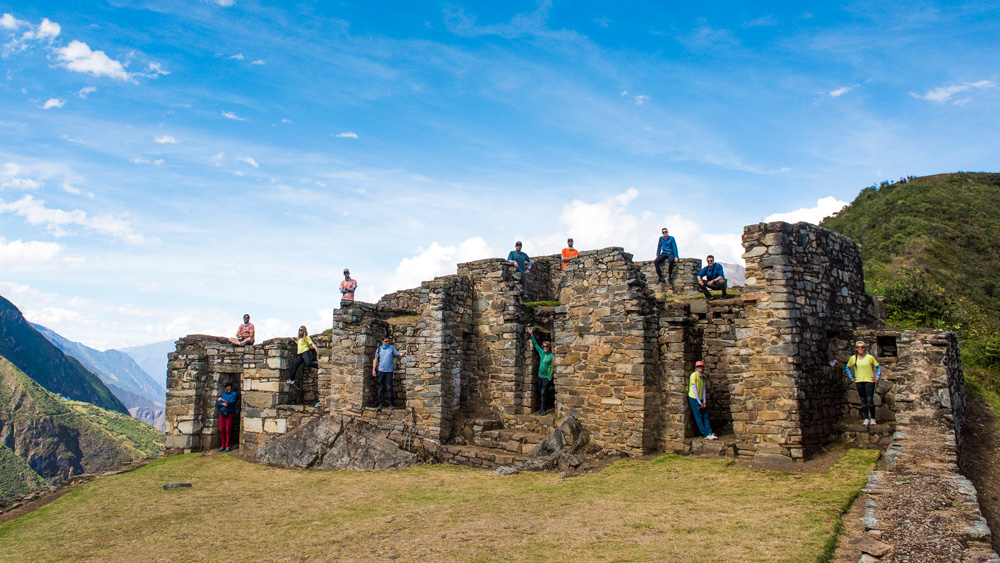
Photo by: Nicolas Gildemeister
Getting There: LATAM Airlines operates a variety of daily flights to Cusco from Lima.
Where to Stay: While Cusco offers an abundance of hotel options, the Palacio Del Inka is hard to beat. Directly across the street from the Qorikancha temple and a short walk from the Plaza De Armas, the hotel is built inside a historical Inca palace. You will find comfortable rooms, top notch service, a large breakfast buffet, and a lively bar with original Inca wall and ceiling for your Pisco Sour nightcap.
When to Go: May to October is dry season and apart from getting rained on at Machu Picchu, we remained dry for our Choquequirao trek.
Guides: Working with Columbia Sportswear, LimaTours and SA Expeditions organized our entire trek and indeed our entire week in Peru. The guides were second to none and the trekking staff took great care of us, doing everything from putting up our tents at night to cooking us three meals a day.

